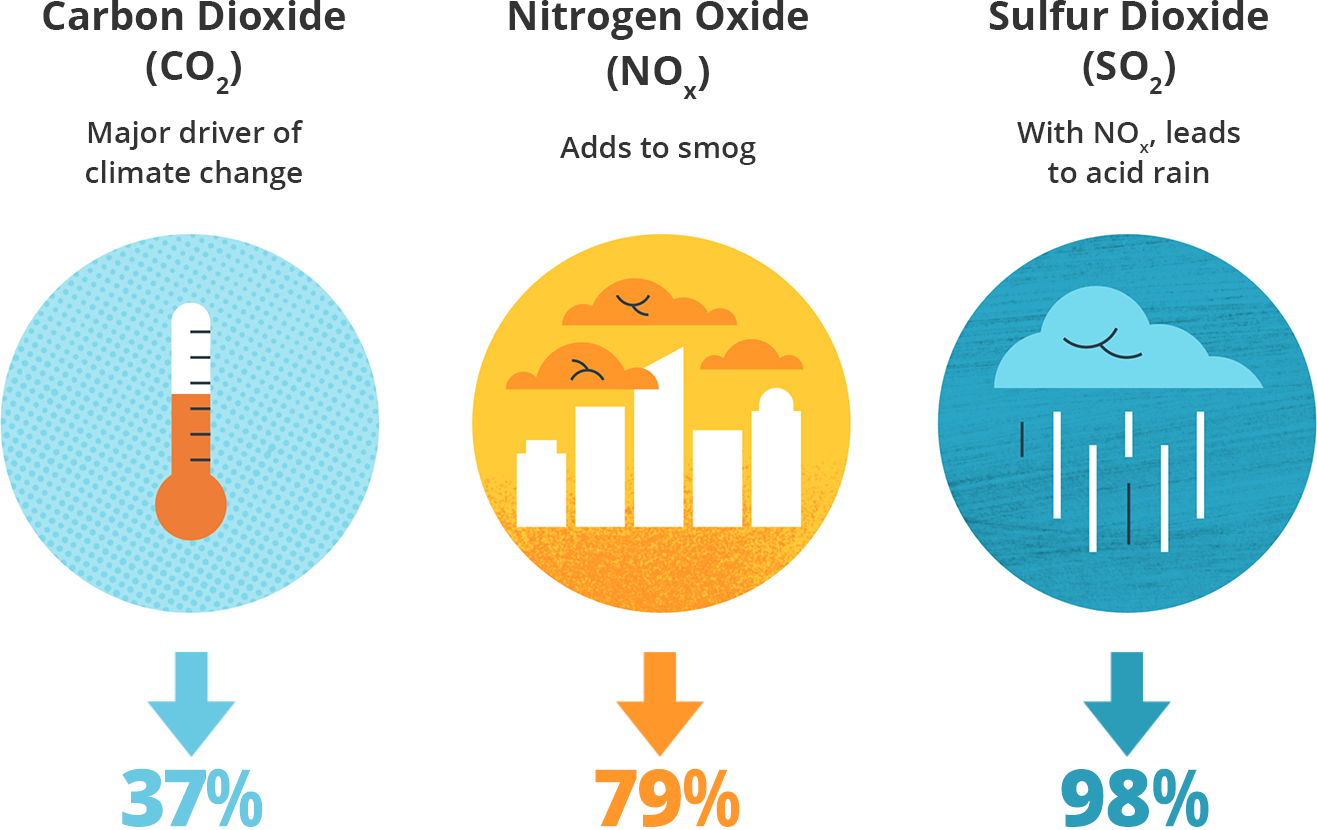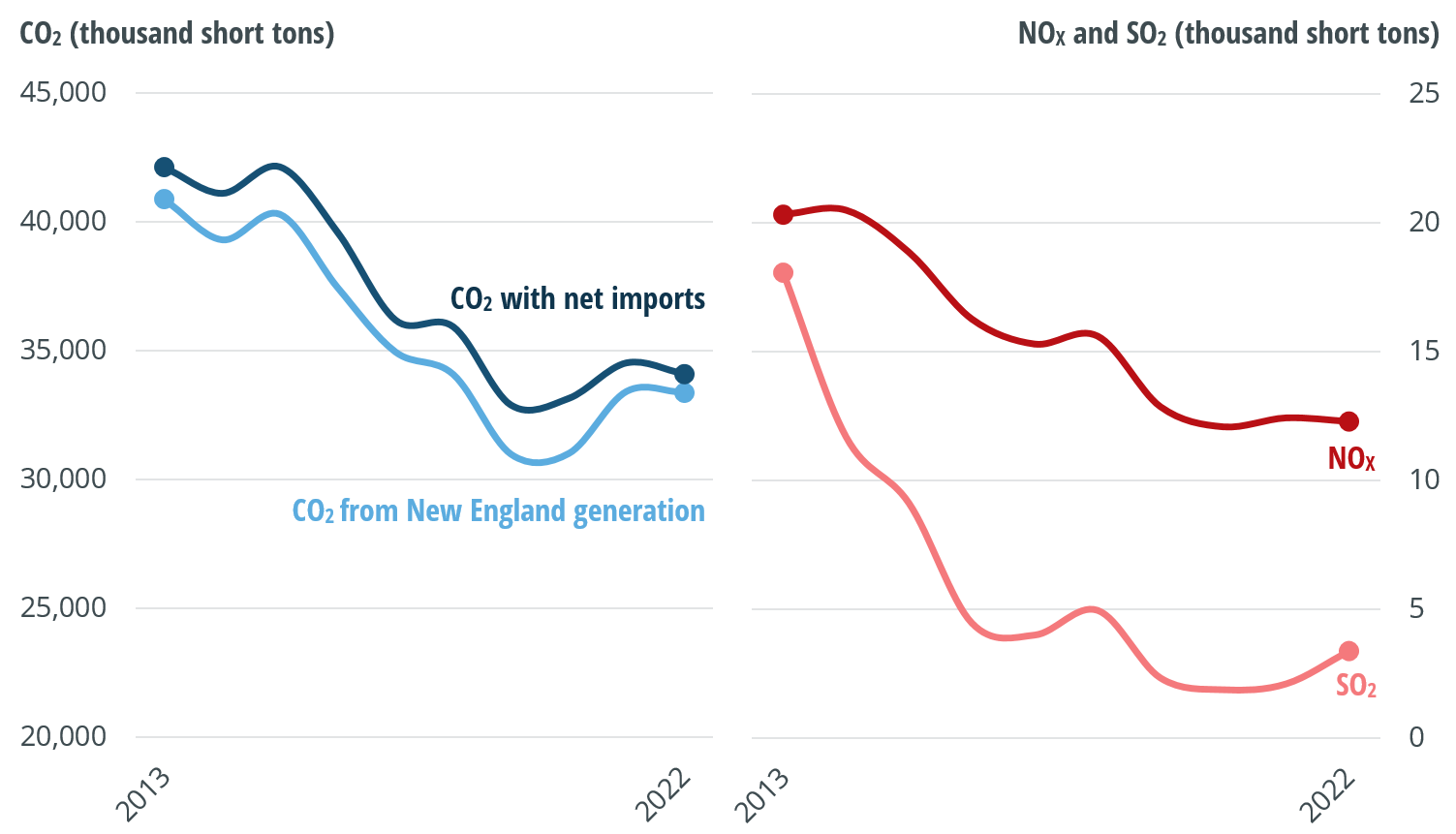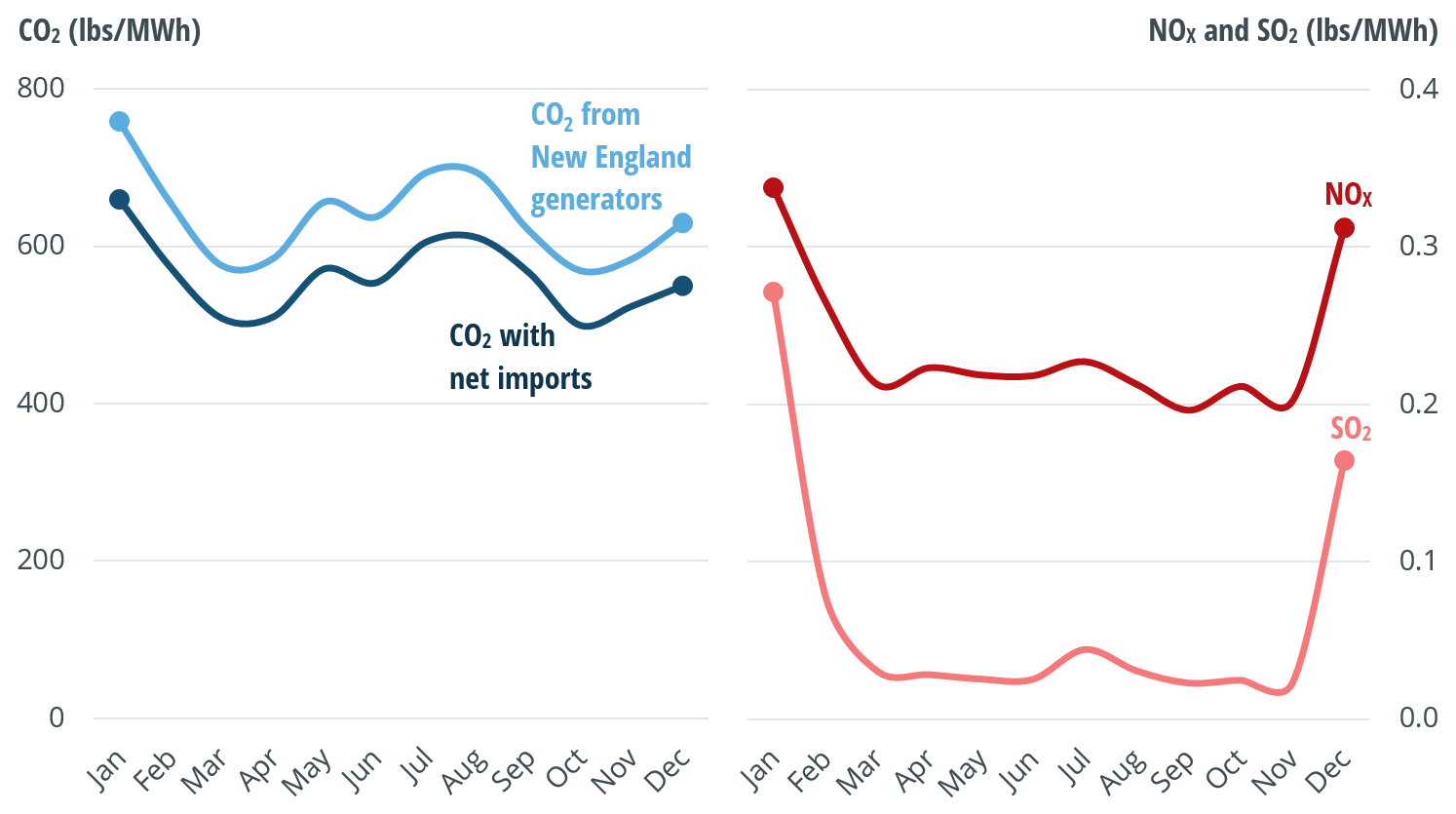Since 1993, ISO New England has produced an annual report on generator air emissions—a comprehensive analysis of the emissions produced by the region’s generation fleet and a review of relevant system conditions. The ISO also publishes real-time emissions estimates on ISO Express.
Air emissions from regional generators have fallen dramatically since the early 2000s. From 2001 through 2022, annual emissions for sulfur dioxide (SO2), nitrogen oxides (NOX), and carbon dioxide (CO2) declined by 98%, 79%, and 37%, respectively.

Source: 2022 ISO New England Electric Generator Air Emissions Report
However, several factors—including increasing oil-fired generation during winter cold snaps due to natural gas pipeline constraints and the retirement of nuclear generation—have slowed the declines or led to increases in some recent years. Learn about the changes between 2021 and 2022, for example, in the 2022 ISO New England Electric Generator Air Emissions Report.
The table below summarizes estimated annual emissions for 2022 as well as emission rates (the pounds of emissions given off, on average, with every megawatt-hour of electricity produced). This is akin to comparing how many gallons of gasoline a car used versus its miles per gallon. The table includes figures for emissions from electricity produced by power plants located in New England, as well as data on emissions associated with New England generation plus electricity imported from other regions.
| New England Generation | 2022 emissions (kilotons) | Change from 2021 | 2022 emission rate (lbs./MWh) | Change from 2021 |
|---|---|---|---|---|
| NOx | 12.3 | -1.1% | 0.24 | -3.3% |
| SO2 | 3.38 | +60.3% | 0.07 | +56.9% |
| CO2 | 33,382 | -0.2% | 643 | -2.3% |
| New England Generation And Imports | ||||
| CO2 | 34,105 | -1.3% | 565 | -1.5% |

Source: 2022 ISO New England Electric Generator Air Emissions Report
Several factors have played a role in the overall reduction of generator air emissions:
Two overarching factors are largely responsible for year-over-year changes in emissions:

Source: 2022 ISO New England Electric Generator Air Emissions Report
Some emerging factors could push the ISO to rely more on higher-emitting, less efficient resources to meet regional electricity demand: